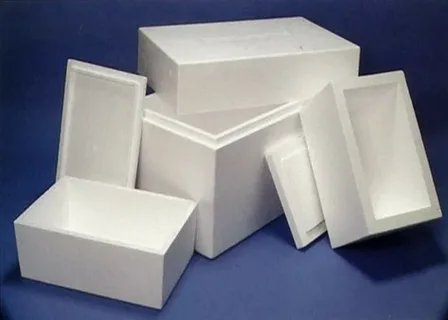The Ultimate Guide to Thermocol Pipe Insulation and Thermocol Roof Insulation
3 min read
In today’s fast-paced world, where energy efficiency and sustainability are paramount, Thermocol insulation solutions offer a reliable and cost-effective way to maintain optimal temperatures in various settings. Whether you’re looking to insulate your pipes or roof, Thermocol insulation provides excellent thermal resistance, preventing heat loss or gain and ultimately reducing energy consumption. In this comprehensive guide, we’ll delve into the benefits, installation process, and frequently asked questions about Thermocol Pipe Insulation and Thermocol Roof Insulation.
Understanding Thermocol Insulation
What is Thermocol Insulation?
Thermocol, also known as expanded polystyrene (EPS), is a lightweight and rigid foam insulation material. It is composed of small, interconnected beads that trap air, providing excellent thermal insulation properties. Thermocol insulation is commonly used in construction projects to enhance energy efficiency and reduce heating or cooling costs.
Benefits of Thermocol Insulation
- Superior Thermal Performance: Thermocol insulation offers high thermal resistance, effectively minimizing heat transfer and maintaining consistent indoor temperatures.
- Cost-Effectiveness: Compared to traditional insulation materials, Thermocol insulation is more affordable and can lead to long-term cost savings through reduced energy bills.
- Moisture Resistance: Thermocol is resistant to moisture, preventing water infiltration and moisture-related damage to buildings.
- Easy Installation: Thermocol insulation panels are lightweight and easy to handle, facilitating quick and hassle-free installation.
- Versatility: Whether you need to insulate pipes, roofs, walls, or floors, Thermocol insulation can be adapted to various applications, making it a versatile choice for construction projects.
Thermocol Pipe Insulation
Overview
Thermocol pipe insulation is specifically designed to prevent heat loss or gain in plumbing systems. By insulating pipes, you can prevent freezing in cold climates and reduce energy loss from hot water pipes, resulting in energy savings and improved system efficiency.
Installation Process
- Preparation: Ensure that the pipes are clean and dry before starting the installation process.
- Measurements: Measure the length and diameter of the pipes to determine the required insulation size.
- Cutting: Using a sharp knife or insulation cutter, cut the Thermocol insulation tubes to the appropriate length.
- Fitting: Slide the insulation tubes over the pipes, ensuring a snug fit without any gaps.
- Sealing: Seal the joints and seams with adhesive tape to prevent heat leakage.
- Additional Protection: For added protection, consider covering the insulation with a protective outer layer, such as PVC or aluminum jacketing.
FAQs about Thermocol Pipe Insulation
Q: How does Thermocol insulation prevent pipes from freezing?
A: Thermocol insulation creates a barrier between the pipes and the surrounding environment, reducing heat transfer and preventing the pipes from reaching freezing temperatures.
Q: Can Thermocol pipe insulation withstand high temperatures?
A: Yes, Thermocol insulation is designed to withstand temperatures typically encountered in plumbing systems, making it suitable for both hot and cold water pipes.
Thermocol Roof Insulation
Overview
Thermocol roof insulation plays a crucial role in maintaining indoor comfort and energy efficiency in buildings. By insulating the roof, you can prevent heat gain during hot weather and minimize heat loss during cold weather, creating a more comfortable living or working environment.
Installation Process
- Surface Preparation: Clean the roof surface and ensure that it is free of any debris or obstructions.
- Insulation Placement: Place the Thermocol insulation boards on the roof surface, ensuring full coverage and alignment.
- Fastening: Secure the insulation boards in place using mechanical fasteners or adhesive, depending on the roof type and application requirements.
- Sealing: Seal any gaps or joints between the insulation boards to prevent air leakage and maximize insulation effectiveness.
- Weatherproofing: Apply a weatherproofing membrane or coating over the insulation to protect it from moisture and environmental damage.
FAQs about Thermocol Roof Insulation
Q: Can Thermocol roof insulation reduce cooling costs in hot climates?
A: Yes, Thermocol roof insulation reflects solar radiation and prevents heat from penetrating into the building, reducing the need for air conditioning and lowering cooling costs.
Q: Is Thermocol roof insulation environmentally friendly?
A: Thermocol insulation is recyclable and does not contain harmful ozone-depleting chemicals, making it an environmentally friendly insulation option.
Conclusion
Thermocol insulation offers a myriad of benefits for both residential and commercial applications, from pipe insulation to roof insulation. By investing in Thermocol insulation solutions, you can enhance energy efficiency, reduce utility costs, and create more comfortable living or working spaces.



